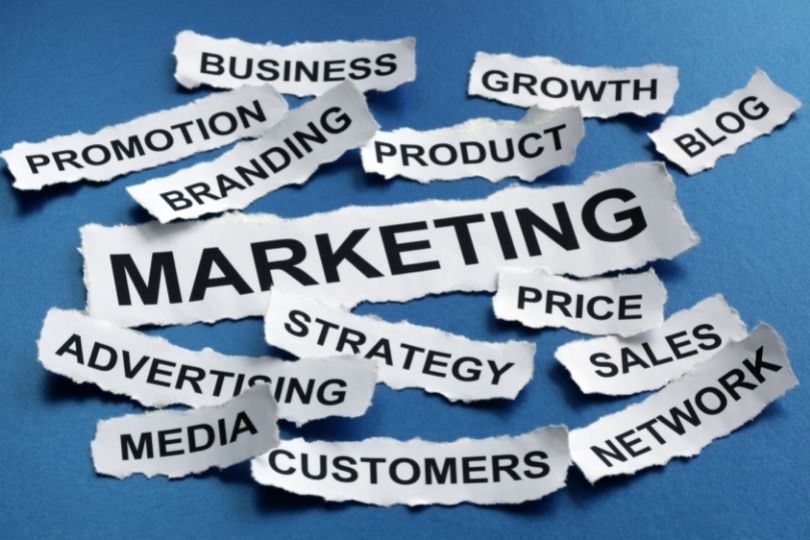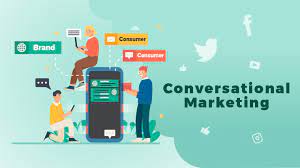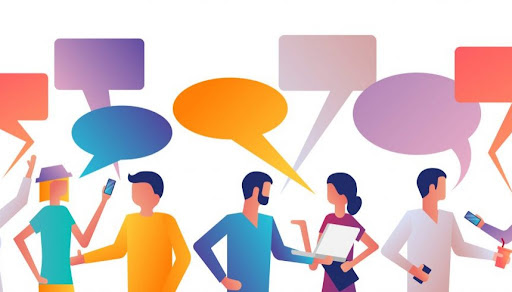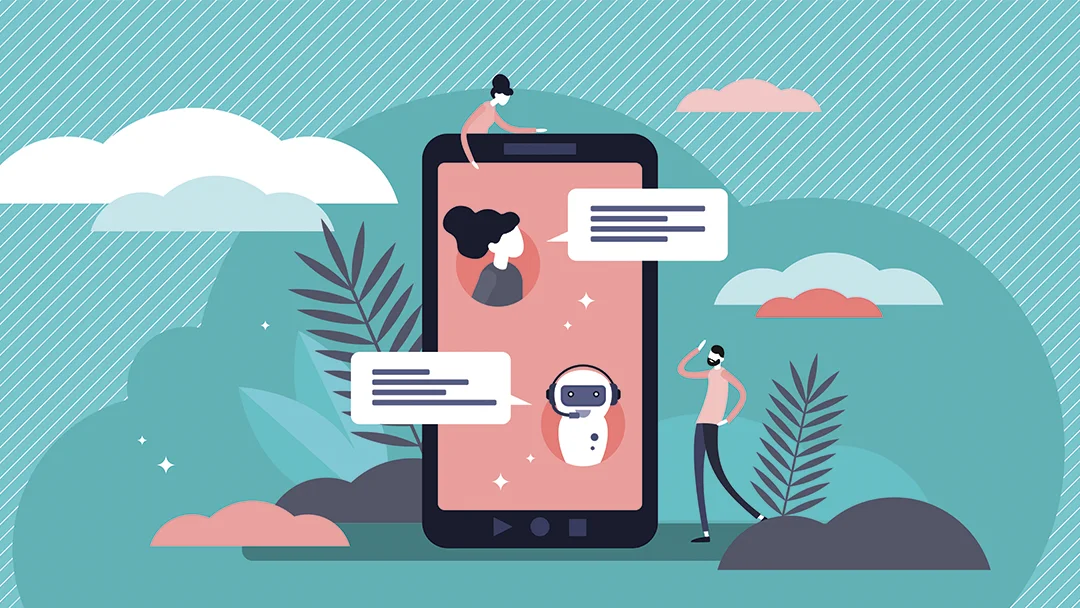Hello!
Market competition is fierce. Today advertising and marketing specialists do their best to cope up with the innovative strategies and stay ahead of competition. These brand-new strategies are all about nudging leads to make a final step - improve conversions.
One of these strategies is conversational marketing.
Conversational marketing is one of the best practices to increase your lead conversions exponentially.
In this guide, you will get familiar with conversational marketing and how to use it to increase lead conversions.
Let's start!
The Basics of Conversational Marketing
The definition of conversational marketing is self-explanatory. This marketing strategy implies building one-on-one dialogue with potential customers to promote a product.
 The main goal of conversational marketing is letting leads know how the product can help solve the issues they have. It leads to building warm relationships between the brand and the customers.
The main goal of conversational marketing is letting leads know how the product can help solve the issues they have. It leads to building warm relationships between the brand and the customers.
You might wonder - what is the difference between advertisement and conversational marketing?
Sure, the ads can cover up the issues your target audience might have. However, any ad lacks the element of communication with the audience. That's why people ignore the ads most of the time. Instead of burning your PPC budget draw attention to conversational marketing.
Conversational marketing creates an environment where you talk to the audience. You are ready to answer whatever questions people want to ask.
How does it work?
Obviously, it is unreal to communicate with every potential customer using human resources. That's why this process takes an automated approach with the help of chatbots.
How to Run Conversational Marketing Strategy
Conversational marketing strategies can vary in terms of niche specifications. To put it simply, you can't use the same conversational marketing strategy for the fashion and medical industries.
However, there are a few general rules that each conversational marketing strategy abides by. Let's review them.
1. Q&A concept
First and foremost, you need to know what questions your audience is going to ask. To explore these questions your task is to find out what search queries your audience correlates with your product. You can use keyword research data for this purpose.
How?
 Take search queries and analyze them with the "Questions" report from Ahrefs' Keywords Explorer tool.
Take search queries and analyze them with the "Questions" report from Ahrefs' Keywords Explorer tool.
For example, you suggest email signature software. One of the search queries is "email signature":
As you can see, there are 14K+ question-based search queries that you can use for your conversational marketing strategy.
Keep in mind that various channels - live chat, bot-based chat, & live-streaming - have their own specification. Thus, you will have to identify the right call to action for each channel specifically.
It will help you guide users to the right place on your website - the pricing page, the page where they can make a purchase, the FAQs page, etc.
2. Personalization
The key to conversational marketing is the way you can personalize your communication with the audience.
 The process of personalization using chatbots begins with the following nuances:
The process of personalization using chatbots begins with the following nuances:
- The type of the user (existing customer, random user, potential customer who wants to buy)
- The page the customer is on (if the customer is on your blog page, your chatbot can suggest some topic-related content)
- Type of activity on the site (if the user visits some specific landing page, the chatbot can suggest more detailed information regarding this tool or service)
3. Feedback
Don't hesitate to ask users to share their feedback regarding your chat system. It will help you optimize the system per users' suggestions. Plus, you will let the audience know that you care about the opinion of the users.
What Are the Benefits of Using Conversational Marketing
Conversational marketing has many benefits that can help you increase lead conversions.
 Let's review the most prominent ones:
Let's review the most prominent ones:
• It saves time
Conversational marketing aims to speed up communication with your customers. It handles customer requests round the clock providing people with the required information. Eventually, it saves time for both sides - customers and brand.
For instance, you want to get a more detailed answer to the question of how to create an infographic. If the chatbot can suggest the right link to the source, it will save your time exploring this information.
Practice shows that a chatbot suggests the information taken from the Help Center. It is not exactly what you might need. Therefore, it is far better to send your request to a live customer success specialist.
• It creates a better user experience
User experience plays a crucial role in the overall success of the website. Conversational marketing can help you with this.
Depending on what stage of the marketing funnel each user is at, a customer gets instant answers to the questions with the help of a chatbot.
• It helps get to know customers better
The most basic way to collect information about the customers is using analytics and various surveys. This type of data suggests the information based on objective findings.
Conversational marketing takes a personal approach towards each customer having a chat.
A one-on-one conversation allows users to explain what they are looking for and what they need exactly. Every conversation brings new findings of your customers. They share likes and dislikes regarding your product or service.
 Thanks to conversational marketing you will be able to discover more about the product and update it accordingly.
Thanks to conversational marketing you will be able to discover more about the product and update it accordingly.
• It creates a human-like experience
Human connection in customer support is essential. Customers don't like when they get answers to the questions without any soul touch in it. That's why it is quite important to use conversational marketing that provides users with a human-like experience.
Now, let's see how to use conversational marketing to increase lead conversions throughout the marketing funnel.
Tips on Using Conversational Marketing Throughout the Funnel
The idea behind conversational marketing is to push potential leads down the funnel to the final stage - conversion. Therefore, conversation marketing should apply different tactics for every stage specifically.
The marketing funnel consists of four main stages - awareness, interest, consideration, and conversion.
So, what are the conversational marketing tactics you can use throughout the funnel?
1. Awareness stage
The first stage of the marketing funnel is called awareness. At this stage, you spread awareness around your brand using ads on social channels. It helps you drive more traffic to your site and let people know your product better.
Unfortunately, there is one problem that appears at this stage. When potential leads click the ads, they redirect to one of your landing pages. They see your product and don't know what's next.
If they don't find any solution, they bounce your site. Consequently, they never reach the conversion stage of the funnel.
How to catch the audience's attention at the awareness stage?
 Add conversational bots to your interactive ads. It will help you apply a conversational marketing approach outside your website. These conversational bots can give some automated answers to the questions from the audience. But it won't be enough to give them a clear understanding of your product.
Add conversational bots to your interactive ads. It will help you apply a conversational marketing approach outside your website. These conversational bots can give some automated answers to the questions from the audience. But it won't be enough to give them a clear understanding of your product.
Eventually, conversational bots nudge users to visit your website. That's when your chat system needs to engage with the audience further providing users with the information based on what landing page of your site they are.
For example, when you visit a landing page of the Content Explorer tool from Ahrefs, you can see that the chat system suggests the post on the updated version of the tool.
This way of using conversational marketing at the stage of awareness helps catch people's attention and move them to the next stage - interest.
2. Interest stage
At this stage, users are already aware of your product and brand. They are eager to find more information about your tools and your business in general. Users start to navigate your site exploring new findings.
Chatbots collect customer data about visitor behavior. It helps find out how many times visitors have visited your site and what pages they have spent their time on.
By having this data, chatbots can personalize their approach and suggest answers to specific questions. It leads to increasing lead conversion up to 15%.
When chatbots engage users, they continue to move to the next stage of the funnel i.e consideration.
3. Consideration stage
At this very stage, you can consider potential leads like the ones who are willing to become your customers. They are already satisfied with the work of your chatbots. They are interested in your product.
 It is time to get your customer success specialist to join the conversation via live chats.
It is time to get your customer success specialist to join the conversation via live chats.
When it comes to a live chat, it is important to make sure that users can connect with a real human specialist without any difficulties. This option should be available with a single click.
Live communication with your team of product experts can increase the chances to get leads converted tremendously. Even if the user doesn't hit a "purchase" button after a live conversation, there is still a high chance to give a final nudge for this action.
4. Conversion stage
 Finally, the last stage of the funnel - conversion. Your leads have explored your website, consumed information regarding your product from chatbots and a live chat specialist. It seems like the user wants to become your customer. But there is no conversion itself.
Finally, the last stage of the funnel - conversion. Your leads have explored your website, consumed information regarding your product from chatbots and a live chat specialist. It seems like the user wants to become your customer. But there is no conversion itself.
What to do then?
The solution is simple - make your chatbots suggest a purchase page as the final notification once the user wants to leave the site. It will be one more hint from your end that would incline users to buy from you.
Optimizing the Customer Journey With Conversational Marketing
Conversational marketing is a simple, straightforward and an effective strategy that creates conditions to increase lead conversion.
This marketing strategy follows a few core principles - humanity, trust, and credibility. These simple principles play a decisive role in turning leads into paid customers.
Don't shy away from using conversational marketing in practice. It works!
If you think this post lacks some information, feel free to share it in the comments section.
Below we have collected a number of interesting articles that almost completely cover all the current problems of promotion and optimization; add them to your bookmarks and keep them always at hand:
- 6 Ways to Promote Your Content on Social Media That Have Been Neglected
- 10 Content Marketing Tactics for your Startup Blog
- Common Social Media Marketing Mistakes to Avoid
- What is Influencer Marketing and How to Work with Social Media Influencers?
- TikTok SEO: A Simple Guide to Rank Your Videos
- WooCommerce vs. BigCommerce – What’s Better for SEO?
- Which Link Building Strategy Is Best For SEO?
- Intro to SEO: Terminology and Metrics
- What is Orphaned Content And How It Can Affect Your SEO?
- How Does Website Security Affect Your SEO
- 6 Affordable Cities for Digital Nomads to Live and Work In
- The Impact Of Digitalization In Entertainment
- Tips That Will Help You Navigate the Digital World Safely
- The Widening Digital Divide Cuts People Out of AI and Automation Careers
- 5 Tools To Improve Your Digital Back Office
- The Digital Transformation of Education
- Top 5 AI Applications Marketers
- How Social Media Marketers Are Using AI To Improve Their Performance
- Demand Generation vs Lead Generation – How They Differ & Why It Matters?
- Top 9 WordPress Lead Generation Plugins
- 8 Steps To Master Attraction Marketing and Skyrocket Your Lead Generation Strategy
- Fascinating Risk Management Tactics That Can Help Your Business Grow
- 3 No-Cost Marketing Tactics You can use Right now to Bring in More Sales
- 10 Tactics to Do SEO for Contractors
- 7 Effective Tactics For Humanizing Your Brand (With Examples)
- Top 5 Healthcare Content Marketing Tactics
- Building Powerful Tactics
- 10 Tactics to Do SEO for Higher Education
- Test Data Management: Strategies for Efficient and Effective Testing
- Reasons You Should Invest in a High-Quality Document Management Software
- What You Need To Know To Improve Your Contract Lifecycle Management
- Virtual Cards and Its Advantages to Business Employees
- 4 Ideas to Make Company Virtual Events Fun for Employees
- 7 Unique Year-End Appreciation Ideas for Your IT Employees
- 5 Strategies To Create An Effective Employee Training Program
- Prioritizing Employee Mental Health: Why It Matters For Business Success
- How to Inspire the Next Generation of Tech Entrepreneurs
- Best Security Tips For Start-Up Entrepreneurs
- Top 10 Startup Ideas You can Steal from Successful Entrepreneurs
Thank you!
Subscribe to our newsletter! Join us on social networks!
See you!






